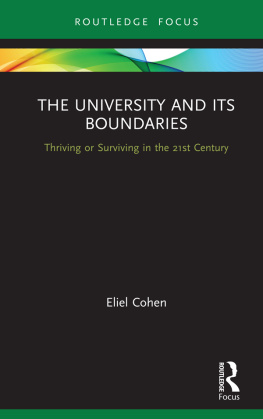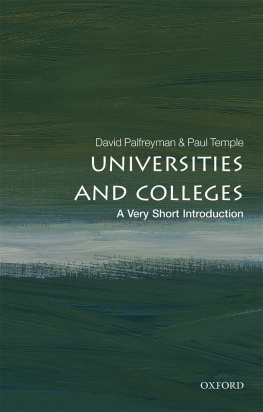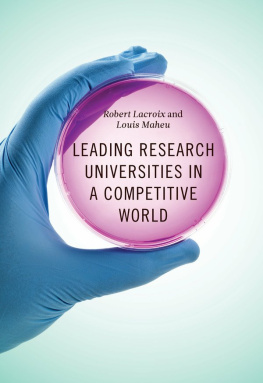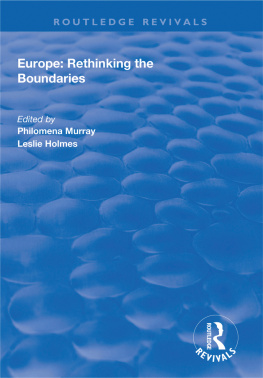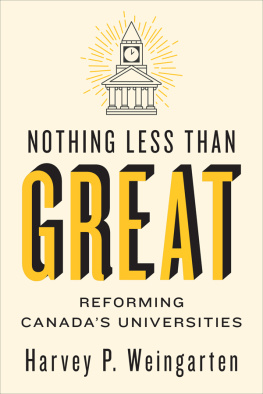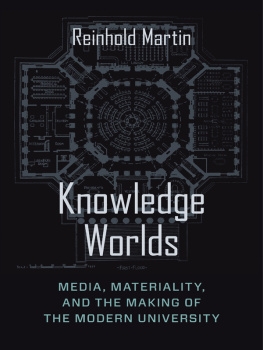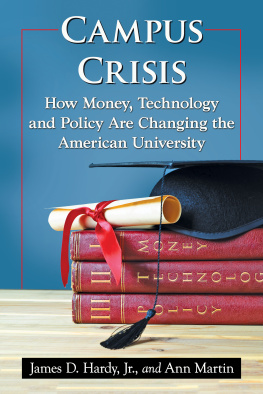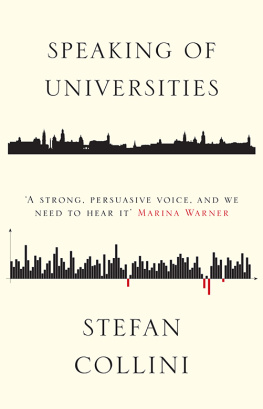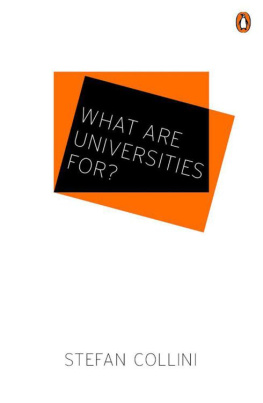I hope all will forgive me for the minimalist approach I have adopted here. From words of encouragement to intensive support; from new opportunities to new ways of thinking; from inherited inquisitiveness to career advice; from duty to friendship; from collegiality to love, I wish to briefly acknowledge the following people, each of whom have contributed in some way to my writing this book (some of whom will likely never read this): Dr Vassiliki Papatsiba; Dr Heather Ellis; Professor James Wilsdon; Professor Geoff Payne; Professor Simon Susen; Dr Sandra Leaton Gray; Dr Fiona Rodger; Dr Clare Brooks; Professor Jackie Leach Scully; Professor Martyn Kingsbury; Professor Richard Watermeyer; Dr Jenn Chubb; Dr Julianne Viola; anonymous reviewers; my generous research participants; Dr Jared Crane; Katie Cohen; Hyeonseon Ro; Audrey Cohen; Stephen Cohen; Isaac Cohen; and Mary Shad.
Sampling impactful research
Since I sampled cases of academic research from those which achieved a high Impact rating in REF2014, I will briefly describe the REF2014 process and how it was possible to draw from it in my sampling strategy.
Within REF2014, research was assessed at the departmental (rather than university) level. Departments made their submissions to one of 36 disciplinary groupings, referred to as Units of Assessment (UoA). The impact strand of the assessment requires departments to submit Impact Case Studies the amount of Case Studies depends on the size of the department, but there is a minimum of two Case Studies per submission. Impact Case Studies are four-page narrative documents which describe a body of research with references to relevant research outputs, and which detail and evidence specific impacts resulting from that research. The descriptions and evidence of research outputs are provided in order to demonstrate how the submitting departments contributions were crucial to the impact. The judgement is based on the reach and significance of the non-academic impact which resulted from research, with the official definition of impact being an effect on, change or benefit to the economy, society, culture, public policy or services, health, the environment or quality of life, beyond academia (Higher Education Funding Council for England, 2009). According to the official website (Research Excellence Framework 2014, 2014), Impact Case Studies are given a rating of between 1* to 4*, with the following definitions:
I sampled only research which contributed to 3* or 4* rated Case Studies, as I wanted my analysis to be able to shed light on the practices and processes associated with the kind of research being privileged in the current policy context (Laing, Mazzoli Smith, & Todd, 2018). REF2014 results are available at ref.ac.uk/2014. Note that although the website aggregates results to the level of departmental submissions, rather than individual Case Studies, it is possible to identify Case Studies which achieved either 3* or 4* by only sampling from departments which achieved 100% 3* or 4* ratings.
Classifying departments by prestige/status
Departments were classified into three institutional contexts: elite, more prestigious and less prestigious. There are two aspects of institutional context contributing to these departmental classifications: university status and departmental ranking. Regarding institutional status, I drew from Bolivers (2015) recent work. Her cluster analysis results in a four-tier structure of UK academic hierarchy: an elite Tier 1 includes only two institutions; Tier 2 comprises 39 institutions; Tier 3 is the largest, including 67 institutions; last, there is a small cluster of 19 institutions which make up Tier 4 (Boliver, 2015, pp. 619620). My sample strategy targeted departments based in universities from all four clusters/tiers.
Next, regarding departmental ranking, I identify departments whose Overall REF2014 rating was relatively high, middle and low in relation to others within the same UoA. I ascertained these rankings from the Times Higher Educations (2014) publication of institutions ranked by UoA performance. Based on this, the submissions in my sample which I characterise as High rank between 1st and 6th in their respective UoAs, while those characterised as Medium rank between 9th and 28th, and those as Low from between 37th and 40th.
Drawing from these sources then, the classifications are defined as follows:
- Elite = (i) based in a Tier 1 or Tier 2 institution and (ii) having a high overall rating in REF2014
- More prestigious = either
- (i) based in a Tier 1 or Tier 2 institution but not (ii) having a high overall rating in REF2014, or
- (i) based in a Tier 3 or Tier 4 institution but not (ii) having a low overall rating in REF2014
- Less prestigious = (i) based in a Tier 3 or Tier 4 institution and (ii) having a low overall rating in REF2014
Data collection
My initial approach to accessing documentary data was via an interactive online database of searchable and downloadable REF Impact Case Studies, which is accessible via the REF website (https://impact.ref.ac.uk/casestudies), an output of the commissioned work by Kings College London and Digital Science (2015). I used the Impact Case Studies as a starting point and then followed up on various leads from there, including reading the research outputs referenced therein, and searching web-based material about the individuals and organisations involved in the research and its impact. I acknowledge Atkinson and Coffeys (2004) caution that documents are representations of a particular kind of documentary reality (p. 61). Such documents as produced in the context of audit exercises like the RAE [Research Assessment Exercise, the REFs predecessor] are intended to reflect the coherence of a departments research strategic thinking and the cogency of its research plans (Atkinson & Coffey, 2004, p. 70, emphasis added), rather than the more complex and messier aspects of the reality of academic research. I therefore emphasise that I treated these documents (and indeed all documents) with due caution. My main uses of the REF documents were to obtain a broad overview of the underpinning research and to identify the key academic and non-academic actors and organisational structures associated with the research. Overall, Impact Case Studies constituted only 8% of the documents studied, so my analysis was informed by a far broader set of documents, each of which I treated as representing only partial reality. Such documentary-led approaches, although still in a minority, are becoming more common in higher education research (Brennan, Papatsiba, Sousa, & Hoffman, 2016).
I aimed to interview one individual from each of the 19 sampled programmes of research. However, I was only able to secure participation for 14 of the 19 programmes of research (achieved through ten interviews, with some interviewees having participated in more than one programme of research). The ten interviews yielded over 11 hours of recorded data. Having drawn my data mainly from documentary sources, the interviews served to provide additional information that [may have been] missed in my documentary searches, and to check the accuracy of my interpretations (Maxwell, 2013, p. 103).

